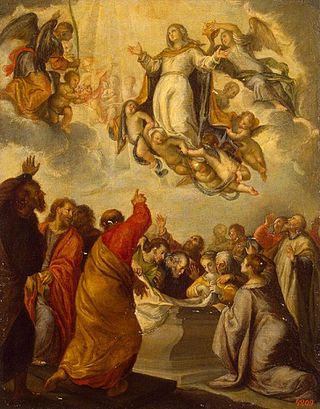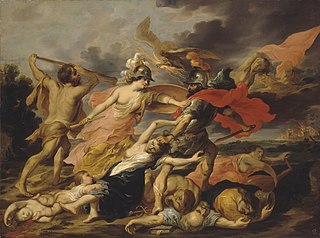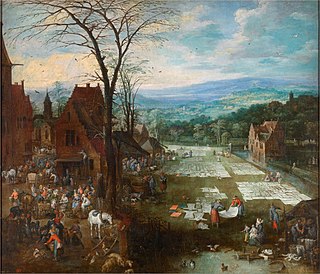
The Prado Museum, officially known as Museo Nacional del Prado, is the main Spanish national art museum, located in central Madrid. It is widely considered to house one of the world's finest collections of European art, dating from the 12th century to the early 20th century, based on the former Spanish royal collection, and the single best collection of Spanish art. Founded as a museum of paintings and sculpture in 1819, it also contains important collections of other types of works. The Prado Museum is one of the most visited sites in the world and is considered one of the greatest art museums in the world. The numerous works by Francisco Goya, the single most extensively represented artist, as well as by Hieronymus Bosch, El Greco, Peter Paul Rubens, Titian, and Diego Velázquez, are some of the highlights of the collection. Velázquez and his keen eye and sensibility were also responsible for bringing much of the museum's fine collection of Italian masters to Spain, now one of the largest outside of Italy.

Giulio Cesare Procaccini (1574–1625) was an Italian painter and sculptor of the early Baroque era in Milan.

Juan de Arellano was a Spanish painter of the Baroque era who specialized in floral still life paintings.

Marten Ryckaert or Maerten Ryckaert, was a Flemish landscape painter. He was known for his small, usually imaginary landscapes in an Italianate style.

Esteban March was a Spanish Baroque painter. Most of what is known about his life comes from writings by Antonio Palomino, who lived slightly later than March.

Tomás de Yepes or Hiepes was a Spanish painter in the Kingdom of Valencia. An artist of the Baroque movement, he worked as a painter of still life and bodegón—still life paintings depicting pantry items. He made paintings both for clients and public events. Although his activity started in the second decade of the 17th century, most of the works attributed to him come after 1642. He continued to paint until the year of his death.

Francisco Camilo was a Spanish painter, the son of an Italian immigrant who had settled in Madrid. When his father died, his mother remarried, and Camilo became the stepson of the painter Pedro de las Cuevas.

The Black Paintings is the name given to a group of 14 paintings by Francisco Goya from the later years of his life, likely between 1819 and 1823. They portray intense, haunting themes, reflective of both his fear of insanity and his bleak outlook on humanity. In 1819, at the age of 72, Goya moved into a two-story house outside Madrid that was called Quinta del Sordo. Although the house had been named after the previous owner, who was deaf, Goya too was nearly deaf at the time as a result of an unknown illness he had suffered when he was 46. The paintings originally were painted as murals on the walls of the house, later being "hacked off" the walls and attached to canvas by owner Baron Frédéric Émile d'Erlanger. They are now in the Museo del Prado in Madrid.

Victor Wolfvoet (II) or Victor Wolfvoet the Younger (1612 – 1652), was a Flemish art dealer and painter of history and allegorical paintings. His artistic output was heavily influenced by Peter Paul Rubens.

The Adoration of the Magi is a very large oil painting by the Flemish Baroque painter Peter Paul Rubens. He first painted it in 1609 and later gave it a major reworking between 1628 and 1629 during his second trip to Spain. It is now in the Museo del Prado in Madrid.

Flemish Market and Washing Place is an oil-on-canvas painting by Flemish painter Joos de Momper. It was painted in the 1620s, and it might be a collaboration between de Momper and Jan Brueghel the Elder

Landscape with Sea and Mountain is an oil-on-canvas painting by Flemish painter Joos de Momper. It was painted in the early 1620s, and is now in the Museum of Prado in Madrid.

Excursion in the Countryside of Infanta Isabel Clara Eugenia is an oil on canvas painting by Flemish artists Jan Brueghel the Elder and Joos de Momper. It was painted in the first quarter of the 17th century, and is housed at the Museum of Prado, in Madrid.

The Infanta Isabel Clara Eugenia in the Mariemont Park is a large oil on canvas painting by Flemish artists Jan Brueghel the Elder and Joos de Momper. It was painted in the first quarter of the 17th century. The painting is kept in the Museum of Prado in Madrid.

Life in the Countryside is an oil on canvas painting by Flemish artists Jan Brueghel the Elder and Joos de Momper. It was painted between 1620 and 1622. The painting is kept in the Museum of Prado in Madrid.

A Farm is an oil on panel painting by Flemish painter Joos de Momper.

Landscape is an oil on panel painting by Flemish painter Joos de Momper.

Landscape with Skater is an oil on canvas painting by Flemish artist Joos de Momper. The painting is today considered a collaboration between the latter and Jan Brueghel the Elder. It was painted between 1615 and 1625. The painting is kept in the Museum of Prado in Madrid.

Landscape with Venus and Adonis is an oil-on-canvas painting by Flemish painter Tobias Verhaecht. The work was probably painted in the 1600s, and is now in the Thyssen-Bornemisza Museum in Madrid.























